Mr Singh's Fabulous Fiery Cookbook: Anglo-Asian fusion recipes with bite
Bring a little bit of India into your home with the Singh family's favourite family recipes
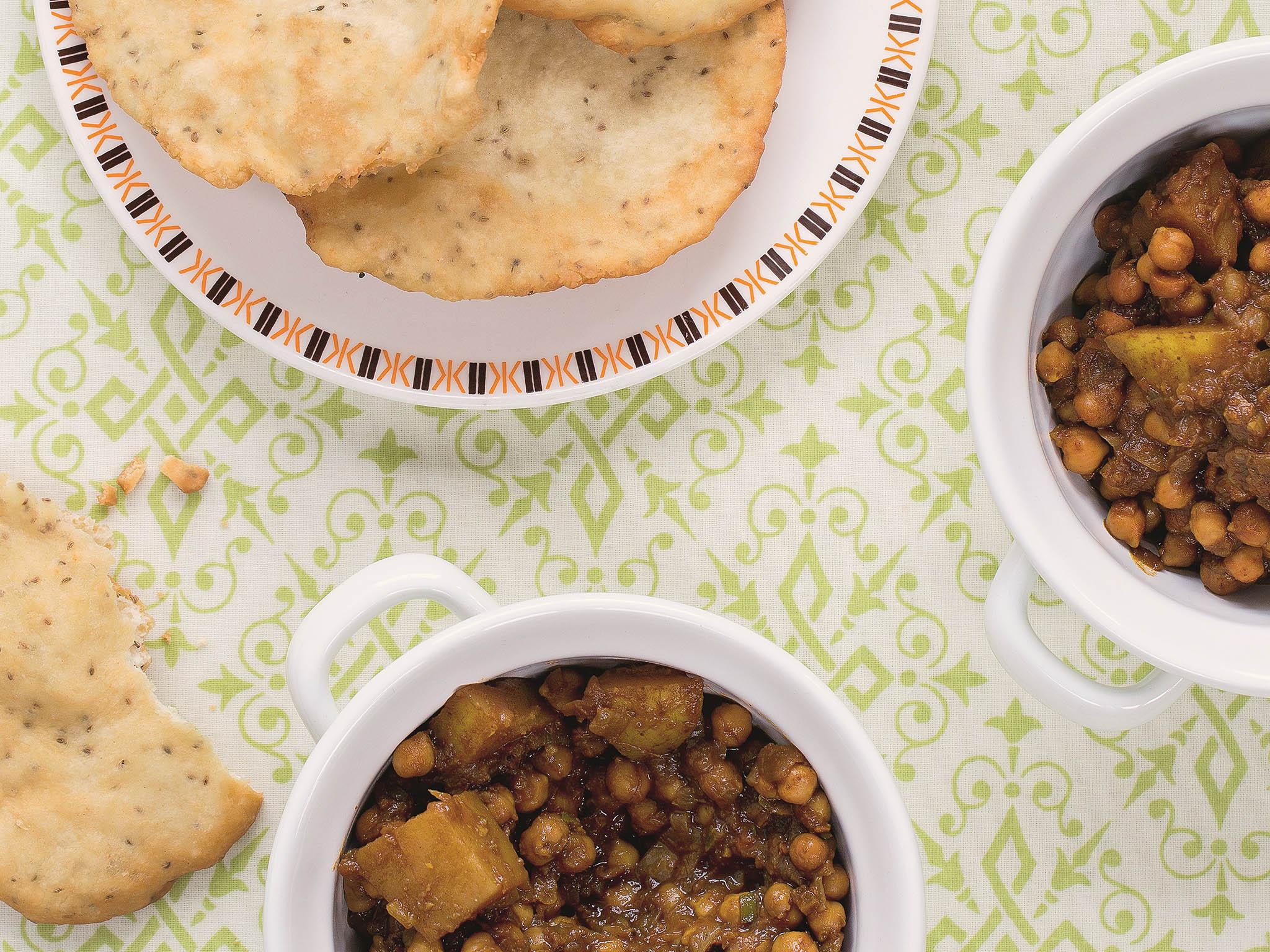
Your support helps us to tell the story
From reproductive rights to climate change to Big Tech, The Independent is on the ground when the story is developing. Whether it's investigating the financials of Elon Musk's pro-Trump PAC or producing our latest documentary, 'The A Word', which shines a light on the American women fighting for reproductive rights, we know how important it is to parse out the facts from the messaging.
At such a critical moment in US history, we need reporters on the ground. Your donation allows us to keep sending journalists to speak to both sides of the story.
The Independent is trusted by Americans across the entire political spectrum. And unlike many other quality news outlets, we choose not to lock Americans out of our reporting and analysis with paywalls. We believe quality journalism should be available to everyone, paid for by those who can afford it.
Your support makes all the difference.Mr. Singh’s Fabulous Fiery Cookbook invites you to embrace a multitude of Anglo-Asian recipes using secret family recipes from their kitchen to yours. These traditional Indian dishes are mixed with a Western style of cooking, making the unfamiliar familiar. Mr Singh’s recipes are easily adjustable on spice levels and offer plenty of meat-free dishes for vegetarians.
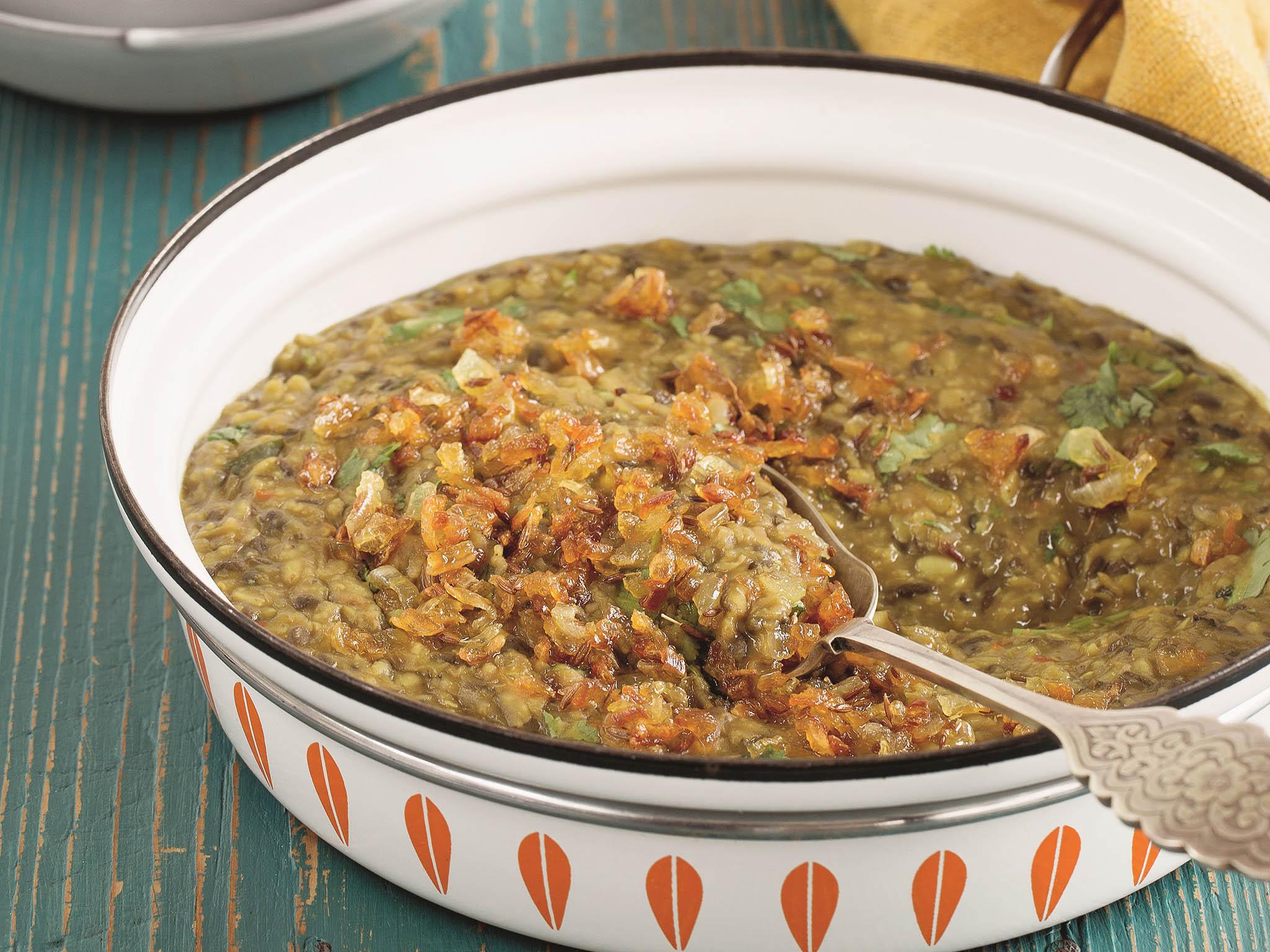
Toor dahl
Dhal is a staple dish in most Indian homes and it’s not hard to see why: lentils are cheap, easy to prepare, packed with protein and make a wonderful base for other flavours. This is a great dish to make if you're doing an Indian feast and have vegetarians coming for dinner – just be prepared to fight off the meat eaters!
Serves 4
100g dried pink lentils (masoor dhal), rinsed
100g dried split mung beans (moong dhal), rinsed
1 tsp salt
¼ tsp ground turmeric
1 tbsp ghee (clarified butter)
2 green bird’s eye chillies, finely chopped
½ tsp cumin seeds
1 tsp garam masala
1 onion, finely chopped
1 handful fresh coriander leaves, to garnish
Rice and flatbreads, to serve
Place the pink lentils and split mung beans together in a large pan with 1.5 litres (1.7 pints) of water over a high heat. Bring to a boil then reduce the heat to a simmer and cook, covered and stirring occasionally, for 30 minutes. Add the salt and turmeric to the pan and cook for 15 minutes more. Meanwhile, melt the ghee over a low heat in a small pan. Once melted, add the cumin seeds and cook, stirring, for one minute, until fragrant.
Add the onions to the pan and cook, stirring continuously, until soft and golden brown, around 15 minutes. Add the onion mixture to the dahl and stir to combine. Continue to cook, uncovered, until thick and soupy, around 20 minutes, then remove from the heat and stir in the garam masala. Serve the dahl hot, garnished with fresh coriander and with rice and flatbreads alongside.
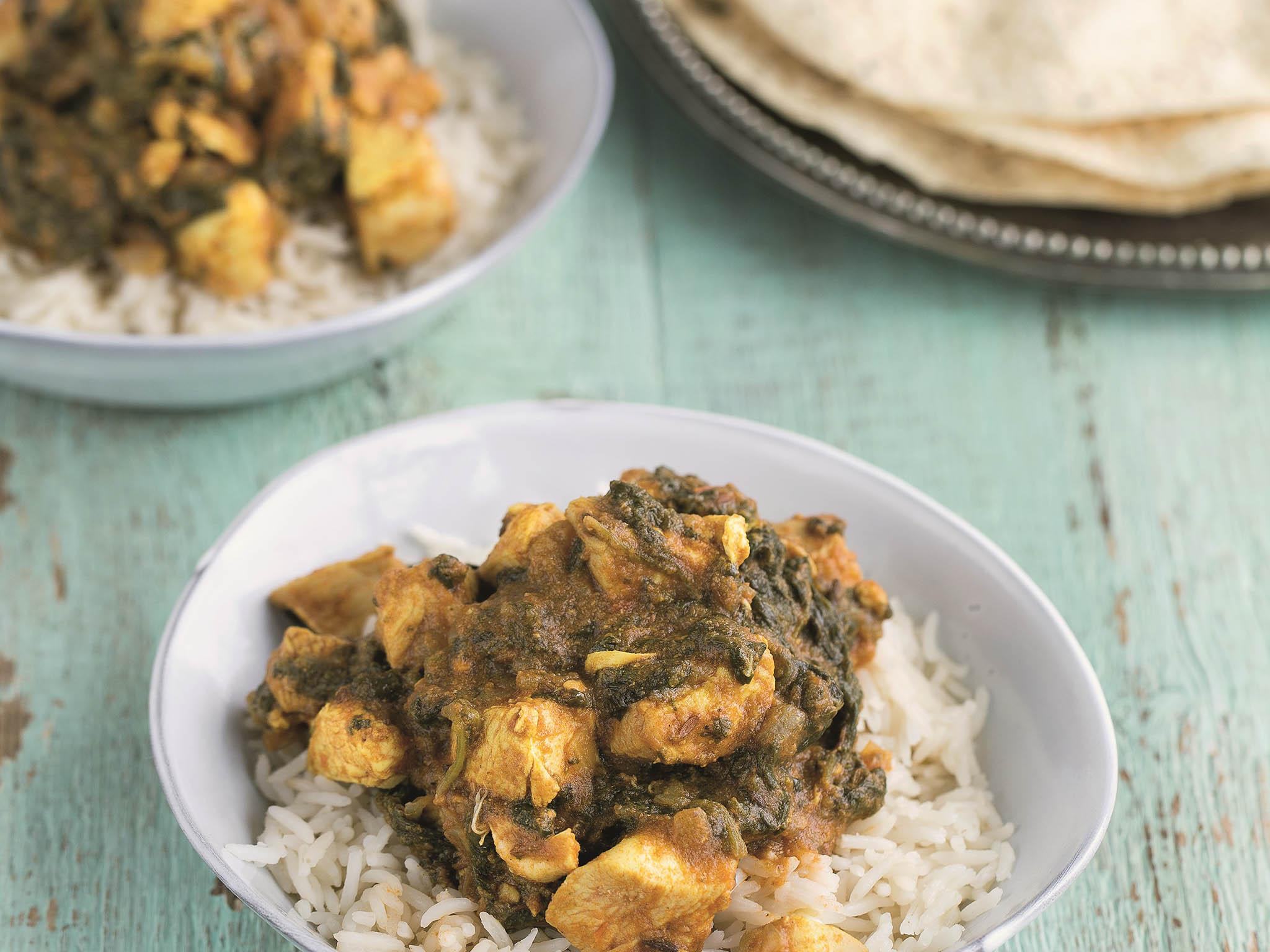
Spinach chicken
Like the above recipe, this is a real family favourite and a great dish for group dinners and celebrations. This one takes a bit more preparation, but is totally worth the effort and the extra cooking means that it gets elevated to slightly more “special” occasions, in our house at least.
Serves 4
2 tbsp olive oil
1 tsp cumin seeds
2 onions, finely chopped
2 garlic cloves, finely chopped
1 tsp ginger paste
225g tinned chopped tomatoes, blended until smooth
2 tsp salt
1 tsp garam masala
½ tsp ground turmeric
1 tsp chilli powder
200g fresh spinach, coarsely chopped
700g chicken breast, cut into bite-size pieces
Cumin, plain rice and chapatis, to serve
Place the oil in large frying pan or skillet over a medium heat. Once hot, add the cumin seeds and fry for one minute until fragrant. Add the onions and cook, stirring continuously, for about 10 minutes, until golden. Add the garlic, ginger, tomatoes, salt, garam masala, turmeric and chilli powder to the pan with four tablespoons of cold water and stir to combine. Bring the mixture to a simmer and cook over a medium heat, stirring regularly, for 15 minutes, adding more water if the mixture starts to stick to the pan.
Add the spinach to the pan and stir to combine then cook, stirring occasionally, for 10 minutes more. Add the chicken to the pan and stir to combine. Cook for 10 minutes, stirring regularly, then pour in 850ml (1½ pints) boiling water and stir again. Leave to bubble away until the chicken is cooked through and the sauce has thickened to a gravy consistency. Divide the mixture between four serving plates and serve hot with cumin or plain rice and chapatis alongside.
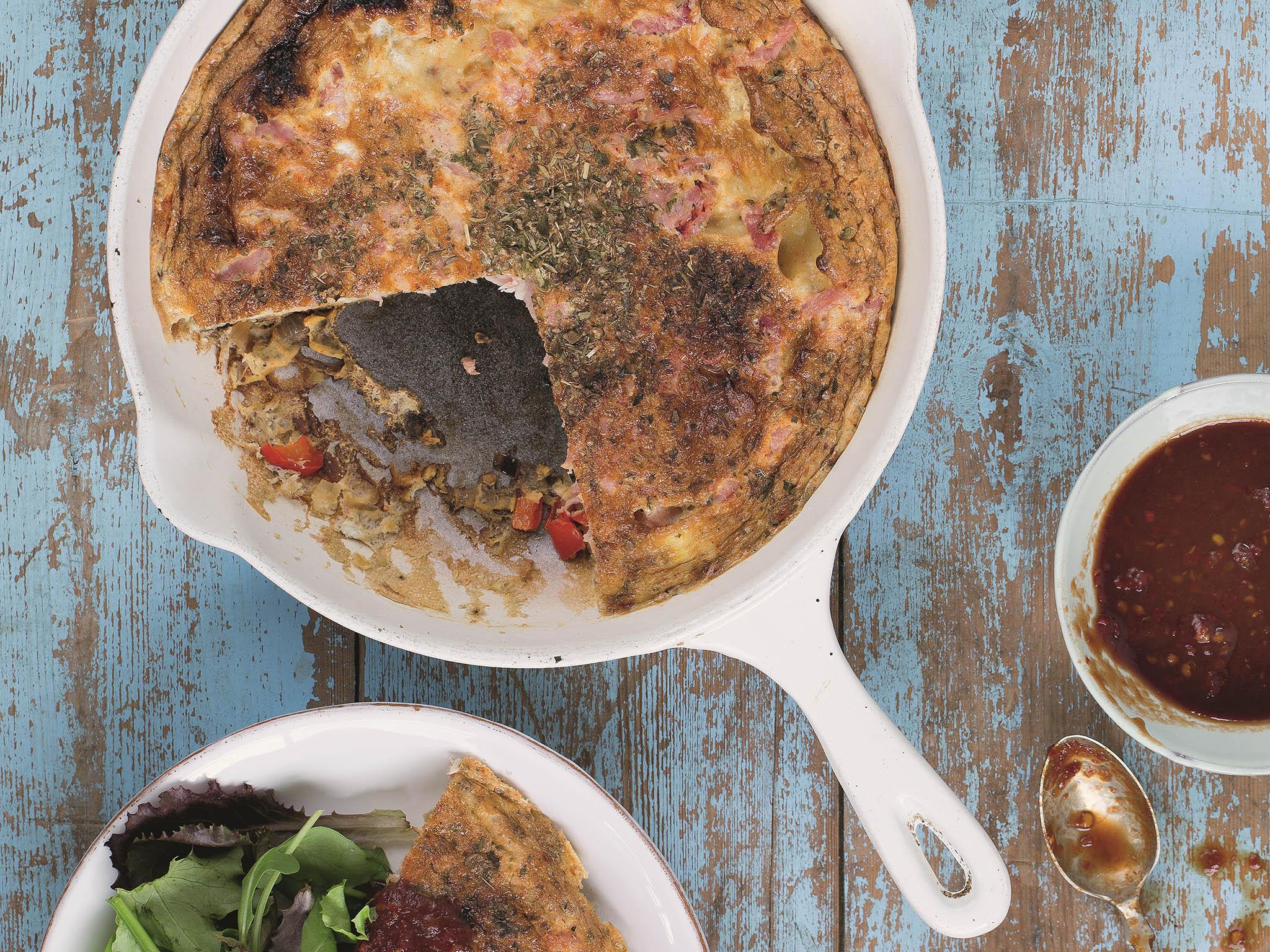
Spicy ham frittata
This makes a substantial lunch for those days when a sandwich just won’t do. I like mine slathered in chilli sauce (see recipe below), but you can tweak toppings and seasoning to make it your own.
Serves 4
8 eggs
½ tsp chilli powder
3 tsp salt
½ tsp pepper
½ tbsp olive oil
1 onion, finely chopped
½ red pepper, diced
100 g cooked ham or chicken, chopped
1 tsp mixed Italian herbs
1 tbsp chilli sauce, to serve (optional)
Preheat the grill (broiler) to high. Crack the eggs into a large mixing bowl then add the chilli powder, salt and pepper and whisk until well combined. Set aside. Place the oil in a large ovenproof frying pan or skillet over a medium heat, then add the onions and cook for three minutes, stirring continuously, until soft but not browned. Add the pepper to the pan and continue to cook for a further five minutes.
Pour the egg mixture into the pan and cook for three minutes more, then scatter the ham or chicken over the top of the frittata followed by the Italian herbs. Transfer the pan to underneath the preheated grill and cook for about four minutes, until puffed up and golden.Using a spatula, carefully transfer the frittata on to a serving plate and slice into four portions. Serve hot, drizzled in chilli sauce and with salad alongside.
Hot chilli sauce
Makes 2 small bottles
2 large bunches mint, leaves picked
4 large green mangos
40g green bird’s eye chillies, chopped
1 tbsp salt
1½ tbsp honey
juice of ½ lime
Place the mint leaves in a small pan and pour over water to cover. Place the pan over a medium heat and bring to boil. Cook for three minutes, then strain the mint leaves and transfer to a blender. Blend the leaves to a fine paste, then place in a sieve set over a bowl. Using a wooden spoon or spatula, push the mint paste through the sieve into the bowl to create a fine puree. Set aside. Peel the mangos, remove the central seed and roughly chop the flesh. Place the mango flesh in a small pan and add water to cover. Place the pan over a medium heat and bring to the boil. Cook for three minutes, then strain the mango and transfer the cooked flesh to a blender.
Blend the mango to a fine paste, then place in a sieve set over a bowl. Using a wooden spoon or spatula, push the mango paste through the sieve into the bowl to create a fine puree. Set aside. Return the mango and mint pastes back to the blender and add the rest of the ingredients. Blend the mixture to a smooth sauce. If the mixture is too liquid, cook it gently over a medium heat until thickened. Leave the sauce to cool, then transfer to sterilised bottles. This will keep for up to two weeks in a refrigerator.
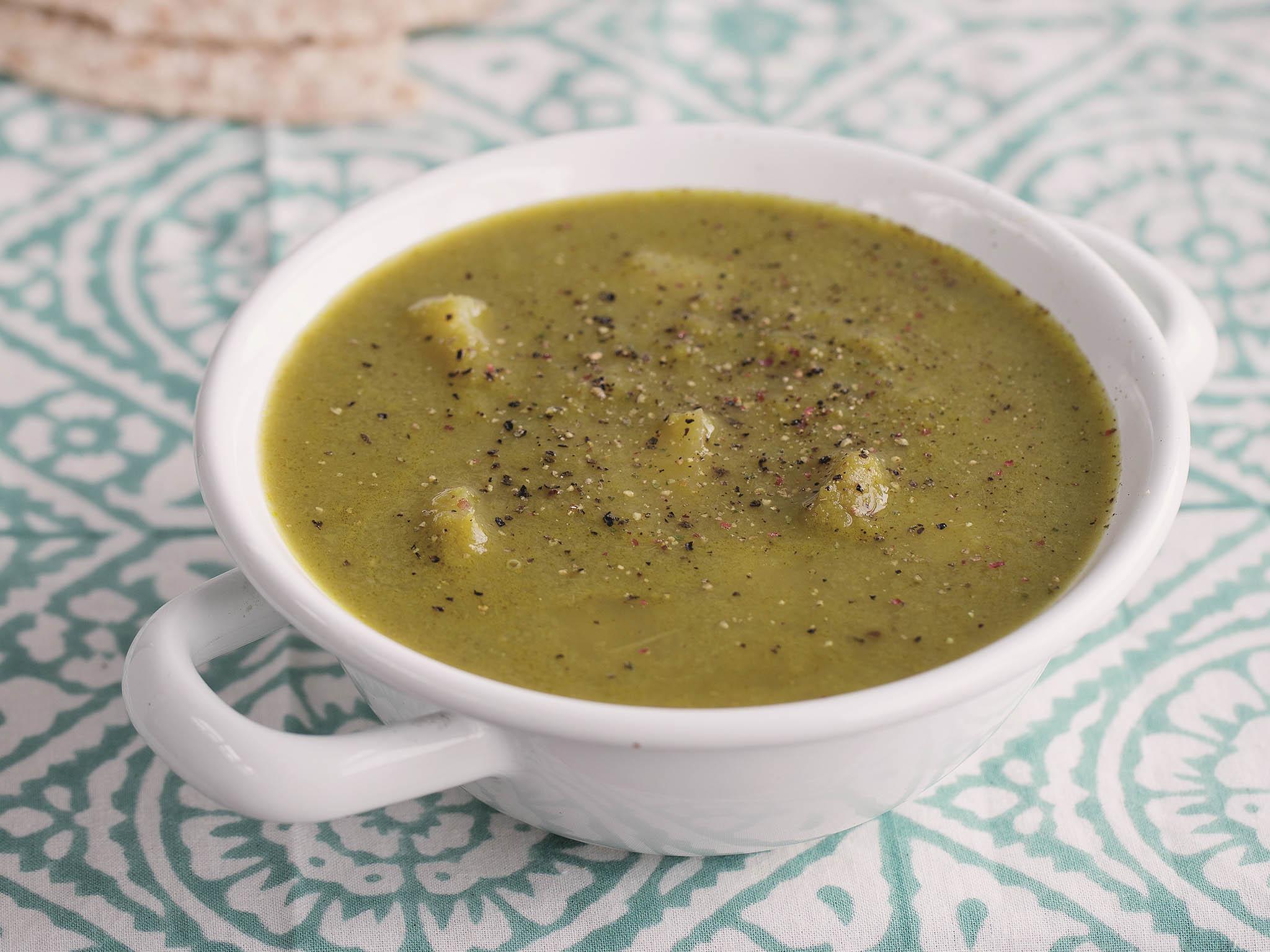
Green garlic soup
This soup has been in the Singh family for decades, though I only came across it after I married into the family. My mother-in-law used to prepare it when she was strapped for time and needed a quick meal, but it’s full of deliciously fresh flavours and very nutritious.
Serves 4
450g garlic scapes (can be bought in Indian supermarkets)
1 medium onion, roughly chopped
115g unsalted butter
2 medium potatoes, peeled and diced into 1cm/ ½ in cubes
1 tsp chilli sauce (see recipe above)
1 tsp garam masala
1 handful fresh coriander, chopped, to garnish
To prepare the garlic scapes, trim away the root ends and peel away any tough outerleaves. Cut away the tough upper portion of the green leaves, then clean the remaining scapes under cold running water.Chop the scapes into 2.5cm (1in) pieces and place in a blender with two tablespoons of water. Pulse to a thin paste then transfer to a small bowl then set aside. Place the onion in the blender and pulse to a smooth paste. Set aside.
Place the butter in a large pan over a medium heat and cook until melted. Add the pureed onion and cook, stirring occasionally, until translucent and tender. Add the garlic scape puree and potatoes to the pan and season with salt and pepper.
Cook the mixture for five minutes, stirring continuously, then pour in 1.4 litres (2½ pints) of boiling water. Bring the mixture to the boil, then reduce to a simmer and cook for around 20 minutes, until the potatoes are tender. Check the seasoning and ladle the soup into serving bowls and garnish with coriander. Serve warm.
Chole with puffed bread
When we first came to the UK, buying meat was a luxury and most of the dishes we prepared were vegetarian. This chickpea curry is packed with protein and is a dish that benefits from simply sitting and simmering. We can eat as much meat as we like these days, but this is still one of my favourites.
Serves 4
2½ tbsp olive oil
1 tsp cumin seeds
2 onions, finely chopped
100g tinned chopped tomatoes, blended smooth
½ tbsp garlic and ginger paste
5 green finger chillies, finely chopped
1¼ tsp salt
½ tsp garam masala
¼ tsp ground turmeric
400g tin chickpeas
1 medium potato, diced
1 teabag
For the puffed bread:
200g self-raising flour
2 tbsp natural yoghurt
2 tsp ajwain seeds
1 tsp salt
dash of milk (if needed)
700ml vegetable oil
To make the chole, place the oil in a medium pan over a high heat. Once hot, add the cumin seeds and onions and cook, stirring continuously, for around 10 minutes, until the onions are golden. Add the tomatoes, garlic and ginger paste, chillies, salt, garam masala and turmeric to the pan and stir to combine. Bring the mixture to a simmer then turn the heat to low and cook, stirring occasionally, until the oil starts to rise to the surface, about five minutes. Open the can of chickpeas and pour the contents, including the water, into the pan along with the potatoes, the teabag and 600ml (1 pint) boiling water.

Stir the mixture to combine then bring to a simmer and leave to cook over a medium heat for 10 minutes. Remove the teabag from the pan and discard. Give the mixture a stir and cover the pan with a lid. Leave the mixture to cook again for another 10 minutes or until the potatoes are tender and the sauce is nicely thickened.
While the chole is cooking, make the puffed flour breads. Place the flour, yoghurt, ajwain seeds and salt in a large bowl and bring together with your hands into a soft dough, adding a splash of milk if necessary. Set aside to rest for 15 minutes. Meanwhile, place the oil in a large frying pan or skillet and heat to 180°C (350°F), or until a piece of dough immediately rises to the surface and fries to a golden brown. Dust your work surface with flour and turn your rested dough out on to it. Divide the dough into eight equal-size balls. Use a rolling pin to roll the balls into 13cm (5in) rounds. Working with one at a time, carefully lay the breads in the hot oil. Immediately start to press and stroke the surface of the bread with the back of slotted spoon or spatula – this encourages the breads to puff up while cooking.
Once the bread has puffed up, flip it and cook on the reverse side until golden. Set aside while you cook the remainder. Serve the chole warm with the breads alongside for scooping.
Mr Singh’s Fabulous Fiery Cookbook published by Pavilion Books. Image credit to John Carey
Join our commenting forum
Join thought-provoking conversations, follow other Independent readers and see their replies
Comments